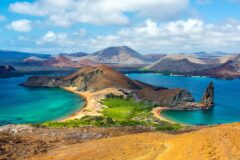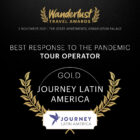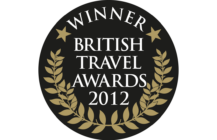Private Journeys
Peru Birdlife: Machu Picchu to Pristine Amazon
12 days
from £2,685pp

Overview & Highlights
Discover Peru’s abundant birdlife on a journey from the Andes to Amazonia. Visit the Sacred Valley of the Incas, hummingbird-filled cloud forest close to Machu Picchu, and the richly biodiverse Amazonian Manú Biosphere Reserve.
- Train to Machu Picchu
- Visit to Machu Picchu with guided tour of the ruins
- Guided Cusco tour
- Guided expeditions from the jungle lodges at Manu
Discover Peru’s incredible birdlife on a journey from the Andes to Amazon. With a breathtaking diversity of altitudes, landscapes and ecosystems, from chilly mountain ranges to humid lowland jungle, Peru is home to over 1,800 species of birds (120 endemic to Peru), 500 species of mammals and over 300 species of reptiles.
On this unique bird-focussed holiday in Peru, see the spectacular Andean setting of the Sacred Valley of the Incas, home to magnificent birds of prey, white-capped Dipper and torrent ducks, then wander through hummingbird-filled cloud forest below the lost city of Machu Picchu, the cultural highlight of any visit to Peru.
With time to discover the enchanting town of Cusco, travel down towards the remote Amazonian Manú National Park, which boasts one of highest levels of biodiversity of any reserve in the world. Here, explore Manú Biosphere Reserve on the edge of the Park, where highlights include razor-billed curassow, cock-of-the-rock, and intimate views of macaws, parrots, and parakeets at a nearby clay-lick.
Here, you also have the opportunity to get hands-on with the centre’s inspirational tree-top canopy research and studies into the endangered blue headed macaw, alongside the conservation-focused scientists and researchers who are based here.
Outline itinerary
Day 1
Arrive in Cusco, transfer to the Sacred Valley
Day 2
Explore Ollantaytambo and the shores of the Urubamba River
Day 3
Expedition train to Machu Picchu, guided tour of the ruins, overnight in Aguas Calientes
Day 4
Cloud forest walk (optional); train to Cusco
Day 5
Explore Cusco with guided visits around the city and the surrounding ruins
Day 6
Travel to Manú Biosphere Reserve in Amazonia
Day 7
Visit coq-of-the-rock habitat; continue deeper into the forest.
Days 8 & 9
Visit parrot clay lick; research projects
Day 10
Community projects at the Manú Learning Centre
Day 11
Return to Cusco
Day 12
Depart Cusco for international flight; or extend your holiday
Itinerary
Day 1
Arrive in Cusco, transfer to the Sacred Valley
Begin your Peruvian birdlife holiday in Cusco, where you will be met and driven into the fertile Sacred Valley of the Incas. Once the bread-basket of the empire, it was heavily populated in imperial times and scores of archaeological sites remain, where well-preserved ruins bear witness to the highly developed society that the Incas created.
Stay in the one of the loveliest properties in the valley at Ollantaytambo, a small town lost in time between the Incas of its foundations and the colonial Spanish invaders, with little cobbled streets and adobe houses dwarfed by the massive bulk of its imperial Inca fortress.
The snow-capped Andean cordillera forms a stunning backdrop to this breathtaking landscape.

Day 2
Explore Ollantaytambo and the shores of the Urubamba River
Today is free to acclimatise and recover from your journey.
At 2,800m above sea level, Ollantaytambo is at a lower altitude than Cusco, so an ideal place to acclimatise.
Explore the delightful cobbled streets of this little town and perhaps visit the impressive ruins upon which the settlement is founded. Later in the day, perhaps take a stroll along the roaring Urubamba river, looking out for torrent ducks and the white-capped dipper.

Day 3
Expedition train to Machu Picchu, guided tour of the ruins, overnight in Aguas Calientes
Travel by train from Ollantaytambo to reach the ruins of Machu Picchu.
The railway route through the Sacred Valley and Urubamba gorge passes through some of Peru’s most exquisite and dramatic scenery. From the fertile valley floor studded with fields bulging with cereals, fruit and vegetables, rimmed by rugged mountains, the track enters an ever-narrowing gorge: the river froths over water-smoothed boulders and vertical cliffs, increasingly draped in tropical vegetation, tower skywards.
You’ll have a guided tour of the ruined city, reached by minibus up a sinuous road, or on foot up a near vertical rocky path. The American explorer Hiram Bingham discovered it in 1911, by which time it was completely buried beneath jungle vegetation. It soon became clear to excavators that the conquistadores had never found the city.
Look out for the Inca wren as you explore this spectacular setting.

Day 4
Cloud forest walk (optional); train to Cusco
An early start this morning to enjoy the best time of day for bird watching in the cloud-forest. You may spot the torrent duck and white-capped dipper, as well as silver-beaked, blue-necked, fawn-breasted and saffron-crowned tanagers. The trails you can follow on this optional excursion are part of an orchid trail, where some 372 different native orchid species have been logged by the American Orchid Society, and are home to cock-of-the-rock, the golden-headed quetzal and 18 different species of hummingbird, including green-and-white and booted-racket-tail, which are native to the area.
After lunch, travel by train to the enchanting city of Cusco.

Day 5
Explore Cusco with guided visits around the city and the surrounding ruins
Once capital of the Inca Empire, its many impressive original Inca walls display extraordinary craftsmanship, while the bustling squares are dotted with ornate baroque colonial churches. It’s a vivacious city, where shoeshine boys and postcard sellers jostle for your attention in cobbled streets lined with handicraft shops and cafés. In the evening, the town centre fills with people flocking to the many restaurants and bars.
A guided tour will take you for a wander through its cobbled streets where you will encounter impressive Inca walls, colonial churches, and bustling squares filled with local artisans and lively markets. The city’s vibrant atmosphere is palpable.
Perched on the hillside above, are the colossal zigzag walls of Sacsayhuamán, which you will visit next. In 1536, a desperate and defining three-day battle was fought here between the Spanish and the Inca. The first conquistadores to lay eyes on it were awestruck, and centuries later, it remains an extraordinary and imposing sight, a testament to the enduring legacy of the Inca civilization.

Day 6
Travel to Manú Biosphere Reserve in Amazonia
Begin your adventure to the Peruvian Amazon. This Biosphere Reserve is the biggest protected area of rainforest in Peru and one of the best places on the continent for seeing tropical flora and fauna.
This adventure takes you into wilderness rainforest, where wildlife spotting is its most rewarding, and to observe community projects and even assist in the scientific research undertaken there.
You’ll be driven from Cusco, climbing over Huancarani pass (3,700m), descending rapidly from the uplands, winding through a tortured rocky landscape and passing through the little traditional town of Paucartambo, the centre of ancient trading routes of the Incas, and on over another pass at 3,500m. The views en route of rippling waves of hazy mountain ranges are superb. Eventually you enter misty, succulent cloud forest before reaching the entrance to the Manú National Park and your simple lodge, the Cock of the Rock.

Day 7
Visit coq-of-the-rock habitat; continue deeper into the forest.
Rise before dawn and head out into the cloud forest to see one the vivid national bird of Peru, the coq-of-the-rock, and maybe watch entranced as the brilliantly fiery-orange creature performs its intricate dance in competition with other males.
Begin the journey by road further down into the cloud forest filled with the sights and sounds of the rainforest: monkeys and some of the richest varieties of birds on earth, in addition to the comical spectacled bear. Along the way, visit a coca plantation to learn about the uses of the leaves and their medicinal properties.
Later you embark on the spectacular, breathtaking, descent to Atalaya. Here you board a motorised canoe on the Alto Madre de Dios for an hour’s ride to the Manú Learning Centre where you wil be accommodated for four nights. These are the upper reaches of one of the most southerly feeders of the Amazon, flanked by low forested bluffs – your first impression of what will become, hundreds of kilometres downstream, the meanderings of the greatest river on earth.

Days 8 & 9
Visit parrot clay lick; research projects
On the next two days you will be rising early at about 5.00am to take part in the conservation and research projects. First, join scientists and researchers on an early morning boat trip to the clay lick (collpa), to view the activity of macaws, parrots, and parakeets. As dawn breaks, be dazzled by the vivid plumage of the birds as they flock together on the walls of the clay lick. A commonplace, everyday activity for the birds; a spellbinding display for the observer. The blue headed macaw is observed and studied here, as it is an endangered species.
Examples of the projects you can get involved in are mammal tracking such as the jaguar, puma, tapir and peccary. Help set camera and footprint traps. Head out on early morning hikes using various surveying techniques for recording data as well as at night doing sound surveys. There is a butterfly project setting fruit-bated traps in various areas of the rainforest and monitoring these. Other projects include the Biomass Forest Structure project which investigates the science behind carbon sequestration.
While taking part in these projects you will be experiencing differing terrain and multiple forest types, coming across squirrel monkeys, hummingbirds and razor-billed curassows. With over 13 different species of monkeys (according to the last report on the area around the Manu Biosphere Reserve) and a large mammal presence, you will be able to observe a lot of wildlife. With over 24 km of trails this is a large exploration area. After a full day working on the projects, return and freshen up for a homemade meal. Following dinner you can talk to the scientists, researchers and other volunteers, perhaps enjoying a presentation of their latest findings, or just relax and take in the sounds of the rainforest.

Day 10
Community projects at the Manú Learning Centre
After an early breakfast you will be taking part in some of the community based projects. The Bio Garden project serves as a model of small scale subsistence farming and reforestation. You will be shown the different crops and be involved in planting them. You will assist the locals in implementing new and sustainable agricultural techniques, such as planting vegetables which are set alongside young trees in the same bed. The crops protect the trees in their most vulnerable stages; by the time the garden has been harvested for several seasons the trees have become established.
Another community project is the Agro-Forestry project, a reforestation plan which will provide you with the opportunity to plant away your own carbon emissions from your trip to Peru on locally deforested areas. Over the next 15 years projects like this one will generate over $US800,000 for the local community. After a full day working on the projects, overnight at the lodge, taking in the wonderful setting, having dinner and sharing experiences with others.

Day 11
Return to Cusco
After breakfast, prepare for departure and take the boat back to Atalaya port-town, where you board transport back to Cusco. The landscape changes dramatically as you climb up into the cloud forest towards the Andes and then descend to the city and your hotel.

Day 12
Depart Cusco for international flight; or extend your holiday
Transfer to Cusco airport for your international flight. Alternatively, extend your holiday elsewhere in Peru, or further afield to Ecuador, Colombia or perhaps to discover the wildlife of the Galápagos Islands.
Essentials
Tour info
Transport
2 rail journeys (longest 4hrs); 4 scenic road journeys (longest 8 hours – the breathtaking journey from Amazonian Manu to Andean Cusco); several river boat transfers and excursions.
Accommodation
This holiday incorporates small mid range hotels with character, a bit of history and some special features. They have excellent locations and good facilities for their grade.
Meals
Breakfast daily, full board days 6 – 10, lunch day 11.
Guides
We carefully select our local partners, some of whom we have worked with for over 25 years. Their English-speaking guides understand the expectations of our customers very well, and are consistently singled out for praise by clients on their return.
Summary Of Nights
12 days, 11 nights: Ollantaytambo 2; Machu Picchu 1; Cusco 2; Manú 5; Cusco 1.
Currency
The unit of currency in Peru is the sol.
How To Take It
Cash machines are available in all major cities and towns, and so taking a debit or credit card with a PIN number is the most convenient way of withdrawing money while on your trip, and in most shops and restaurants you can also pay by card. However, since cards can get lost, damaged, withheld or blocked, you should not rely exclusively on a card to access funds.
We recommend that additionally you take a reasonable quantity of US dollars cash (no more than is covered by your insurance), which you can exchange into local currency in Peru and possibly some travellers’ cheques (American Express are the most widely accepted), though these are gradually falling out of use. Dollar bills should be in good condition, soiled or torn bills may be refused. You can take sterling, but the exchange rate is not always competitive or even available, restricting the number of places where you can change money.
Daily Spend
It is very difficult to give a guideline for essential expenses but a budget of around US$50 per day should cover the cost of good quality meals on those days in the holiday itinerary when not in the Amazon or Galápagos , drinks and the odd souvenir. Eat at the very best restaurants and you will pay considerably more.
Tipping
Tips are welcomed and local guides often rely on their tip as a significant proportion of their income.
Most service industry workers will expect a tip of some kind and so it is useful to have spare change for hotel porters, taxi drivers and the like. It is common to leave 10 – 12% in restaurants.
Tipping guidelines can be found in our Briefing Dossier.
Insurance
Travel insurance is essential.
Details of our recommended policy can be found on our Travel Insurance page.
Given the limited facilities in the Amazon and the costs related to air ambulance services, you are strongly encouraged to obtain travel insurance which includes air ambulance services.
Airport Taxes
If you have purchased your flights through Journey Latin America, the international departure tax is usually included in the ticket.
0
This holiday is suitable for all able, reasonably fit visitors. Not available in February.
Visas
Holders of a full British passport do not require a visa, although passports must be valid for at least 6 months after the trip begins. Anyone with a different nationality should enquire with us or check with the relevant consulate.
If flying to the US, or via the US you will need to fill in your online ESTA application.
Climate
The rainy season in the Andes runs between November and March when there are showers most afternoons. The dry season is in June, July and August when the sun is strong during the day, but at night the temperature drops dramatically (from freezing point to 10°C). May, September and October are less predictable, with both rainy and sunny spells.
Lima is covered in a dull grey mist for much of the year, although the sun does break through between November and March. It almost never rains in Lima, and temperatures are moderate.
In Cusco and the highlands, June to September can be very cold at night, but days are usually extremely clear with sun. November to April are the wettest months of the year – note that rains tend to be in short, heavy bursts, rather than continual showers, with rains clearing towards the end of April. Nights are cold throughout the year at altitude.
Manú, in the Amazon rainforest, is only 12° south of the Equator. It’s hot and humid all year around with little variation from midsummer (December) and midwinter (June).. Daytime temperatures reach the mid-30C°s;from June to mid-September,however, cold snaps may occur lasting a few days. Rain may be encountered at any time of year, however during the “dry season” from May to October there is less than in the “wet season” from late November to April.
Altitude
Your stay in Cusco and the Sacred Valley is at high altitude (3,300-2,800m). Most people are only mildly affected and if you drink plenty of water and allow your body to acclimatise (don’t exert yourself or drink alcohol for the first couple of days at altitude), you’ll probably be OK. Symptoms vary: most common are mild headaches, slight nausea and breathlessness. If you don’t recover in a day or two speak to our representatives; in very rare instances it is necessary to descend to lower altitudes.
Please refer to our Briefing Dossier for further information.
Clothing And Special Equipment
For day-to-day wear you should go prepared to encounter all seasons. Both warm clothing and a sun hat are essential at altitude; a light fleece jacket and a waterproof/breathable outer shell makes a good combination. Trousers, skirt or shorts made from light, quick-drying synthetic materials work well in the jungle. Long-sleeved shirts will protect you from insects.
Strong, comfortable footwear is essential and you should bring insect repellant, sun block, hat and sun glasses. Bring a light waterproof jacket in case of rain.
Don’t forget your binoculars, camera, charger and cards.
Please get in touch with the office before departure if you have any doubts. Good equipment is very important and hard to come by in South America.
Vaccinations
Preventative vaccinations are recommended against the following: typhoid; polio; tetanus; hepatitis A. You should consult your GP for specific requirements such as malaria prophylactics.
You can also find helpful information on the Masta Travel Health website.
What's included in the price
- Services of our team of experts in our London office
- Services of Journey Latin America local representatives and guides
- All land and air transport within Latin America
- Accommodation as specified
- Meals as specified
- Excursions as specified, including entrance fees
Included Excursions
- Train to Machu Picchu
- Visit to Machu Picchu with guided tour of the ruins
- Guided Cusco tour
- Guided expeditions from the jungle lodges at Manu
What's not included in the price
- International flights to Latin America
- Tips and gratuities
- Meals other than specified
- Airport taxes, when not included in the ticket
- Optional excursions


































